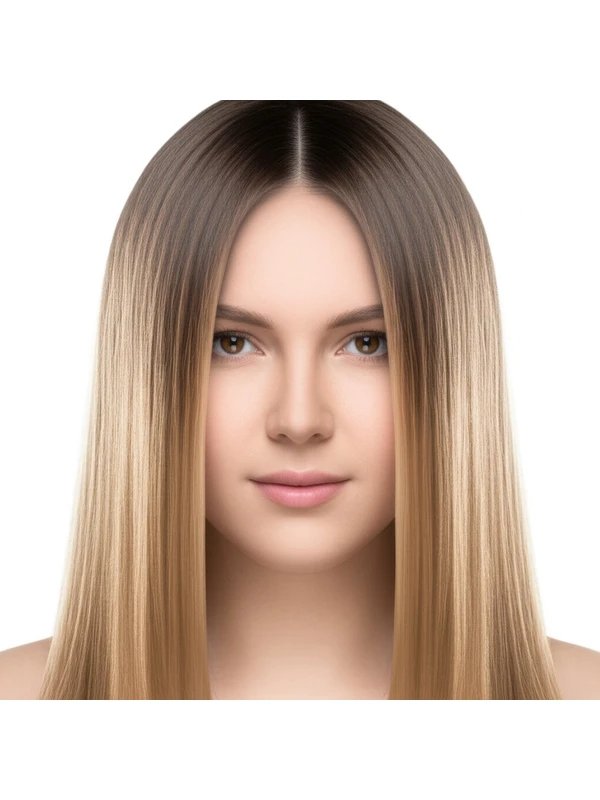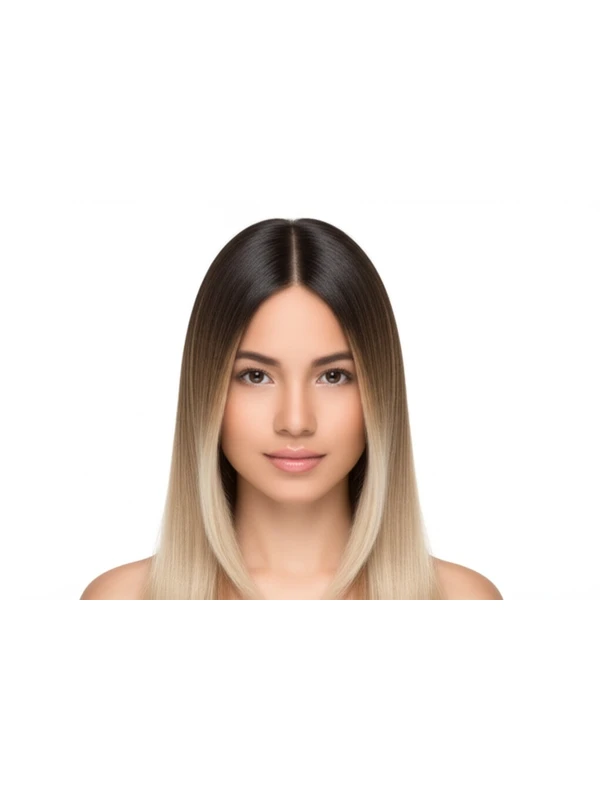#Balayage: A Guide to Sun-Kissed Hair
Balayage is a popular hair coloring technique that creates a natural, blended look. It's all about soft transitions and dimension – think effortless sun-kissed strands! Here’s everything you need to know.
#1. What is Balayage & How Does it Work?
Balayage (pronounced "bah-lay-ahzh") comes from the French word meaning “to sweep.” Unlike traditional foil highlights, balayage involves hand-painting color directly onto sections of hair. The stylist uses a brush – typically a feathered or fan brush – to apply lightener or color in sweeping motions.
- Tools: Feathered/fan brushes, highlighting foils (sometimes used for more lift), gloves, mixing bowls and applicators.
- Placement: The placement is freehand! Stylists strategically paint sections of hair, focusing on areas that catch the light – face-framing layers, crown, ends. The pattern isn't uniform; it’s customized to each person's features and desired look.
- Timing: Processing time varies depending on your natural color, desired level of lift, and product used. The stylist will periodically check the hair's progress during processing to ensure even development.
#2. Best Use Cases: Achieving Your Hair Goals
Balayage is incredibly versatile! It’s not just about lightening; it’s about enhancing your natural beauty. Here are some common goals stylists achieve with balayage:
- Dimension: Balayage adds depth and movement, making hair look fuller and more vibrant.
- Root Blur: The hand-painted application creates a soft, gradual transition from roots to ends, minimizing harsh lines of regrowth.
- Face Framing: Strategic placement around the face brightens features and can soften angles.
- Subtle Coverage: While primarily used for lightening, balayage can also be used with darker colors to add subtle dimension or blend away grays without a full color commitment.
#3. Who Suits Balayage?
Balayage is generally flattering on many hair types and ages! However, certain factors influence the best results:
- Natural Color Level: Works well on all natural hair colors – from dark brown to blonde. The degree of lift will depend on your starting point.
- Undertone: Balayage can be customized to complement undertones (warm or cool). Warm tones (golden, red) pair beautifully with warm-toned balayage. Cool tones (ashy, violet) benefit from cooler-toned highlights.
- Hair Type/Texture:
- Straight Hair: Creates a soft, sun-kissed effect.
- Wavy Hair: Enhances natural waves and adds definition.
- Curly & Coily Hair: Balayage can add dimension without compromising curl pattern (important!). Careful sectioning and product selection are key for even lift.
- Fine Hair: Adds the illusion of fullness.
- Thick Hair: Creates noticeable dimension and brightness.
- Hair Density & Length: Suitable for all densities and lengths, though placement might be adjusted based on density to ensure balanced results. Shorter styles benefit from face-framing techniques; longer hair can handle more extensive placements.
- Lifestyle: Ideal for those who want a low-maintenance look that grows out gracefully. It's great for people with busy schedules!
#4. Balayage vs. Similar Techniques
It’s easy to get confused by all the highlighting terminology! Here's how balayage stacks up:
- Balayage vs. Foilyage: Foilyage is a hybrid technique. It combines balayage painting with foil placement to achieve more intense lift and brightness. Balayage alone offers a softer, less dramatic result.
- Balayage vs. Traditional Highlights: Traditional highlights use foils to isolate strands of hair for even lightening. Balayage is freehand and creates a more blended look.
- Root Smudge vs. Shadow Root: Both techniques soften the line between colored hair and roots. A root smudge involves blending color downwards from the roots, while a shadow root leaves a slightly darker band at the roots for added dimension. They're often used in conjunction with balayage to enhance that soft transition.
#5. Maintenance & Longevity: Planning Ahead
Balayage is known for its low-maintenance nature, but upkeep is still required!
- Salon Timing: Typically every 6-12 weeks, depending on desired brightness and regrowth.
- Toner/Gloss Refresh: Toners or glosses can be applied between full balayage appointments to maintain the desired tone (warmth, coolness) and add shine.
- Grow-Out Behavior: The soft root line means that as your hair grows, the highlights blend seamlessly, requiring minimal touch-ups.
- Budget/Time Planning: Balayage is generally more time-consuming than a single process color but can save time in the long run due to slower regrowth. Cost varies based on stylist experience and hair length/density (expect $200-$500+).
#6. At-Home Care Tips for Balayaged Hair
Protecting your investment is key!
- Wash Cadence: Wash less frequently – 2-3 times per week or even less, using sulfate-free shampoo.
- Heat Protection: Always use a heat protectant spray before applying any heat styling tools (blow dryers, straighteners, curling irons).
- Color-Safe Care: Use color-safe conditioners and masks to keep hair hydrated and prevent fading. Purple shampoos can help neutralize brassiness in blonde highlights.
#7. Pros & Cons of Balayage
Pros:
- Low maintenance grow-out
- Soft, natural look
- Adds dimension and movement
- Customizable for all hair colors and types
- Less damaging than traditional foil highlighting (potentially)
Cons:
- Can be time-consuming
- Requires a skilled stylist for best results
- May not achieve extreme levels of lift without foiling.
#8. Salon Consultation Script: What to Discuss with Your Stylist
To ensure you get the balayage look you want, come prepared! Here are some prompts for your consultation:
- "I'm interested in balayage. Can you show me examples of different looks?"
- “What level of lift do you think is achievable with my natural hair color?”
- "How will the placement work to frame my face and complement my features?"
- "Can we discuss my undertones, and how that will influence the highlight tones?"
- "What’s your approach for working on [my hair texture/density]?"
- “What products do you use, and are they suitable for my hair type?”
- "How often should I expect to come back for maintenance?"
#9. Frequently Asked Questions (FAQs)
- Is balayage damaging? Balayage can cause some damage, as it involves lightening the hair. However, a skilled stylist will use gentle products and techniques to minimize this.
- Can I do balayage at home? While DIY kits exist, achieving professional-looking results is challenging without proper training and tools. It’s best left to the pros!
- How long does a balayage appointment take? Typically 2-4 hours, depending on hair length, density, and desired effect.
- Will balayage make my hair look brassy? Not if done correctly! Your stylist will use toners to neutralize any unwanted warmth. Purple shampoo can also help at home.
- Can I get balayage if I have dark brown or black hair? Absolutely! It just requires more processing time and potentially multiple sessions for significant lift.
- What’s the difference between a shadow root and a root smudge? A shadow root is intentionally darker at the roots, while a root smudge blends colors more subtly with no distinct line of demarcation. Both create softness but achieve it differently.
- Can I get balayage if my hair is already highlighted/colored? Yes! A stylist will assess your existing color and adjust the technique accordingly to avoid damage or unwanted tones.
- How long does balayage last? The highlights themselves are permanent, but the tone can fade over time. With proper care and maintenance appointments, you can enjoy a beautiful balayaged look for months!

